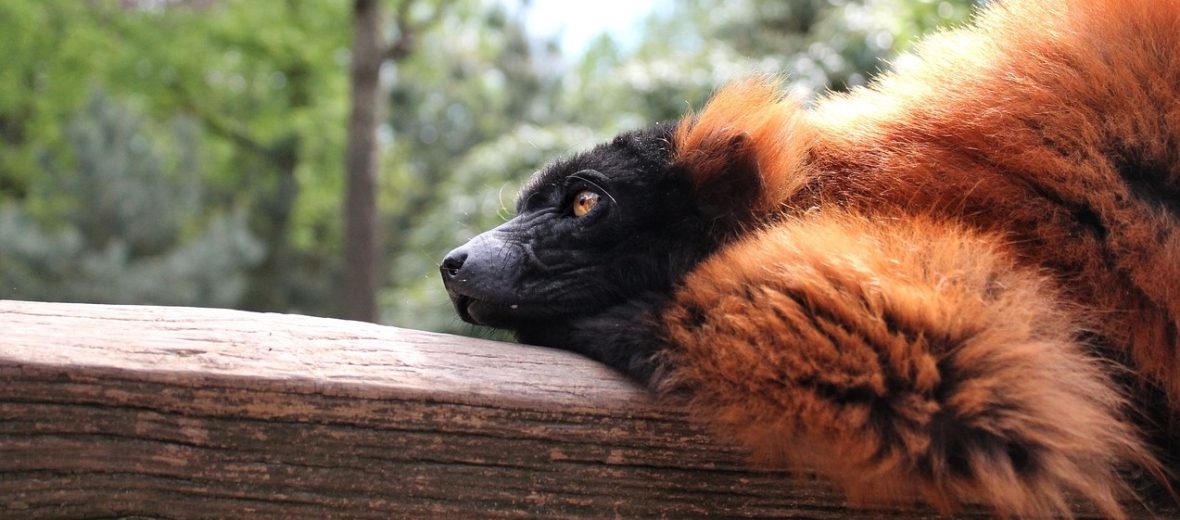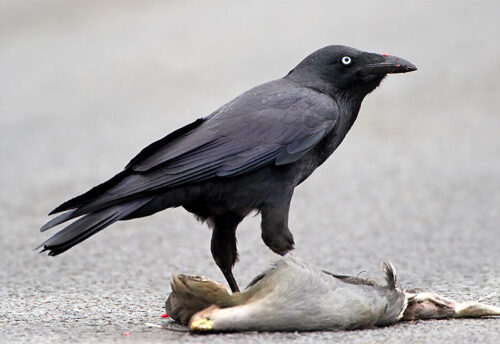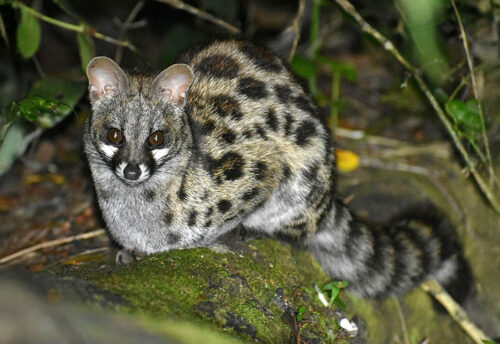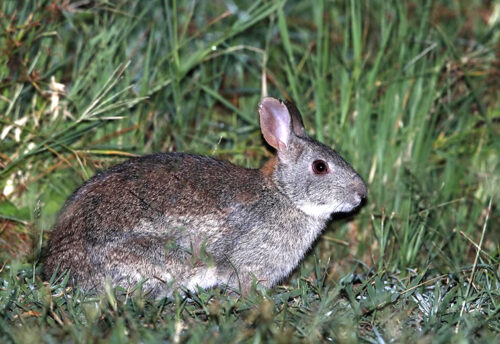
The red ruffed lemur can only be found in the Masoala Peninsula in northeastern Madagascar. They prefer deciduous tropical forests. Red ruffed lemurs are among the largest primates found in Madagascar. Unfortunately, due to habitat loss and destruction, at the hands of the logging industry; hunting; trapping; and climate change – that results in severe storms and/or drought, these cool critters are listed as Critically Endangered by the IUCN. Their numbers are also decreasing.
First the Stats…
Scientific name: Varecia rubra
Weight: Up to 8.5 lbs.
Length: Up to 20 inches, plus up to a 23 inch tail
Lifespan: Up to 20 years
Now on to the Facts!
1.) These lemurs can form troops of up to 32 individuals.
2.) Troops split up into smaller groups in order to locate food.
3.) Red ruffed lemurs are predominantly diurnal (active during the day) with bouts of activity in the early morning and evening.
4.) They are documented producing around 12 or so different calls. Calls such as gurgles, grunts, and cackling roars are often heard in their territories.
5.) These critters are territorial and brawls can break out over borders.
But wait, there’s more on the red ruffed lemur!
6.) A group of lemurs is called a troop or conspiracy.
7.) Being herbivores (eat plant matter), these primates consume a wide variety of fruits (which make up about 75% of their diet), nectar, seeds, pollen, flowers, and leaves.
Did you know…?
These critters possess a specially evolved clawed 2nd toe on each of their hind feet that allows them to groom their fur.
8.) Red ruffed lemurs are polygynous (1 male mates with multiple females). On random occasions, males from other troops will enter another troop’s territory and breed with some of the females.
9.) Females undergo up to a 103 day gestation (pregnancy) that yields up to 6 infants.
10.) Infants are independent at around 4 months.
But wait, there’s still more on the red ruffed lemur!
11.) Individuals are identified by scents produced from a special gland in their rump.
12.) Black, white, and red ruffed lemurs sometimes interbreed, producing a combination of colored offspring.
Did you know…?
Red ruffed lemurs can leap up to 25 feet and run upwards of 12 mph!
13.) When leaping from tree to tree, they utilize their tail as balance.
14.) Since these primates are known for spreading their legs while sunbathing, local tribes thought that these primates were worshipping the sun and were revered and thus not hunted.
15.) When threatened, these critters, in part, use their tail as a signal to stay away. They also emit loud vocalizations.
16.) Fossas, large raptors, and humans all prey on these lemurs.
Now a Short Red Ruffed Lemur Video!
Be sure to share & comment below! Also, check out the Critter Science YouTube channel. Videos added regularly!
Want to suggest a critter for me to write about? Let me know here.



